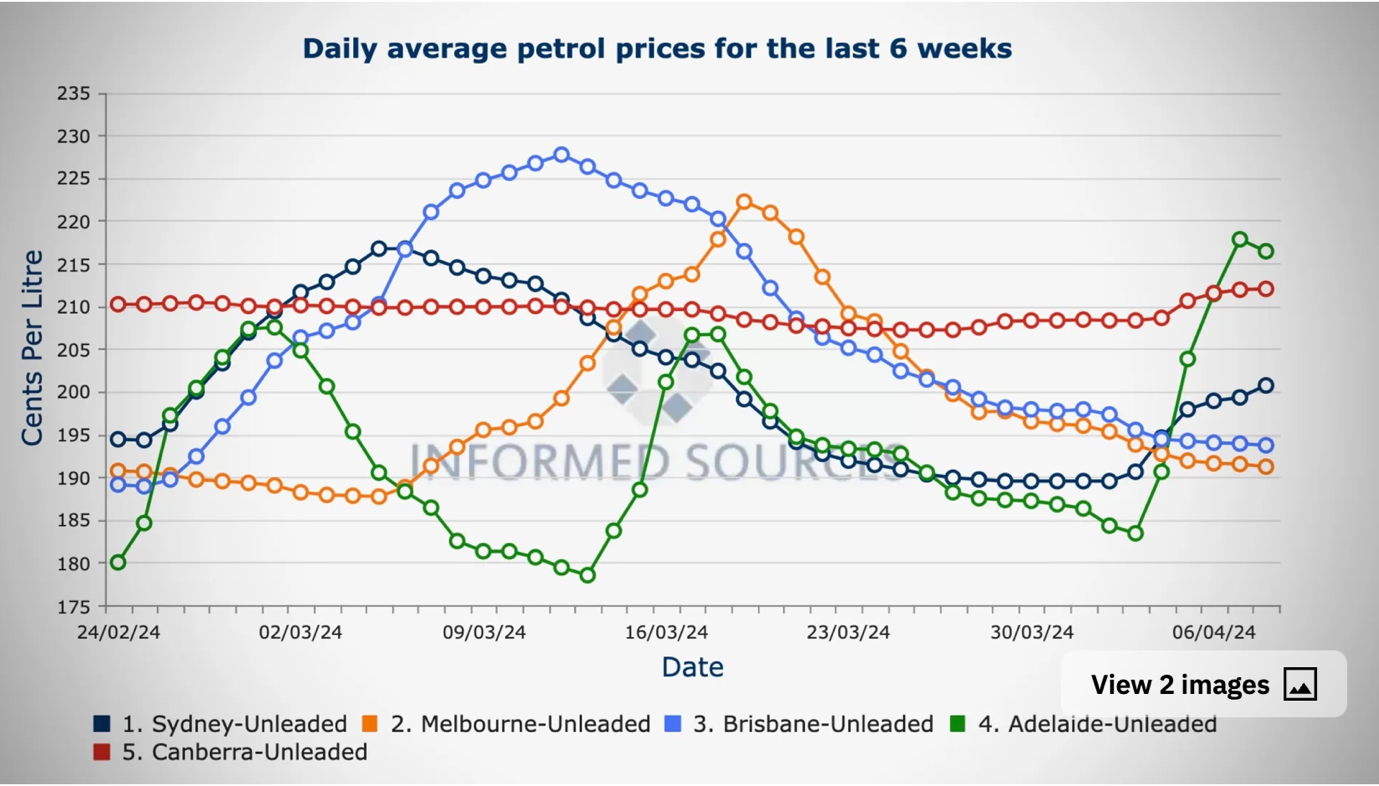

A listener to Ben Fordham’s breakfast show on 2GB asked why petrol prices are so high after being forced to pay $2.46 a litre. So Ben asked me to explain why this is happening and the implications on inflation and rate cuts.
Let’s kick off with the reasons why your petrol prices are spiking, so here goes:
Because of all these factors, petrol prices are in an upward phase and will remain so until Middle East troubles subside and the Russian-Ukraine war ends.
Interestingly, on April 9, writing for drive.com.au Susannah Guthrie told us that “…at the time of publishing, the RACV had Melbourne's average unleaded price at 191.2 cents per litre – 10 cents per litre less than Sydney's average price.”
Different capital cities can be at different points in the pricing cycle, which is something I can’t explain.
“Motorists in Adelaide and Canberra were actually feeling the pinch more than those in Sydney – with Informed Sources data showing Adelaide’s average price at the start of the week as 216.4 cents per litre, while Canberra's was 212 cents per litre,” Guthrie added.
This chart from the website Informed Sources shows the different price movements city to city.

In early April, Drive talked to my mate Craig James, chief economist at CommSec, who explained the basics of what we pay at the bowser. “Usually, you add a gross margin of around 15 cents per litre to the wholesale price, and the wholesale price is sitting around $1.88, so that suggests a fair price is around $2.03 a litre" James said.
I checked this morning and MyNRMA.com.au says the current wholesale price for regular unleaded petrol is 187.3 cents a litre, while diesel is 188.4 cents a litre.
Over the weekend, I paid 203 cents a litre to fill up my diesel car. That means Craig’s figuring was on the money, as 188 cents wholesale plus 15 cents mark-up equals 203 cents.
I could’ve paid 199 cents on the highway beyond Penrith, but the queue was too long. And I could’ve paid 210 cents in the Eastern Suburbs as I drove to the Blue Mountains for the weekend, but I’m an economist and I knew prices would fall as I went West.
What about the impact of these price hikes on inflation? Well, it would be better if petrol prices were falling. War isn’t helping the RBA’s fight against inflation. However, the squeeze on household budgets from the elevated prices actually acts like a rate hike and therefore hits demand and helps reduce inflation.
Given that prices have been elevated since the Ukraine war, when prices were around 240 cents a litre, the recent rises aren’t big from the average prices we’ve endured over the past two years. It means the inflation effect from rising prices is less impactful, as they have risen from a higher price starting point.
That said, the Middle East conflict isn’t a plus for fighting inflation and rate reductions.